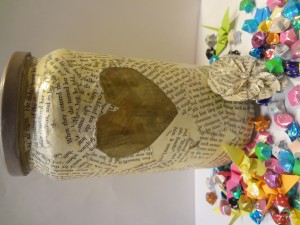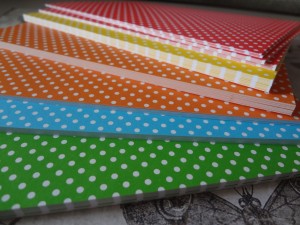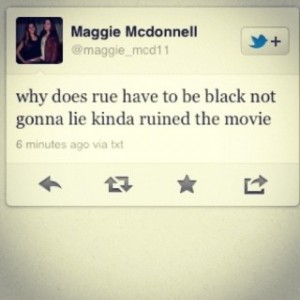This week has been incredibly busy/stressful for me. Making something with my hands, distracting myself from the work, is one thing that always works to calm me down. That being said, I ended up with projects that I didn’t even realize I would make.
For one, I was looking on pinterest, thinking of things I could make with washi tape. Washi tape, by the way, is a crafting tape that originated in Japan that usually has really awesome designs on it. If you’re a crafter, you know exactly what I’m talking about.
I didn’t like many of the ideas I was seeing, so I did something I tend to do when I have an object that can be stuck onto another object: I wandered around my room, deciding what I could cover with washi tape. I settled on a couple of black, moleskin notebooks that I bought a while ago from Uncle Eli’s.
This project, in particular, is pretty easy. All you have to do is line up the washi tape to make sure there are no gaps. The little notebooks ended up looking really cute, and for some reason I’ve found myself more inclined to actually use them. Win-win!


Now the other thing I made was sort of unexpected. I had no idea where I was going with it. I was doing two things simultaneously: I have a few glass jars (I’m a hoarder, remember?) and I was trying to look up crafts that incorporated them; I was also wandering around my room, deciding what I could cover with chalkboard paint. Chalkboard paint, for the record, is amazing. You can paint virtually any hard surface (so long as it’s not porous) and have a chalkboard in a day.
I decided on painting the lid of a glass jar with some gray chalkboard paint (and while I was at it, I painted the last moleskin I had. It’ll be fun writing on and in that.)
I want my room next year to have a sort of vintage feel, so I tried to play with that sort of vibe. I covered the jar in (guess what?) book pages, leaving a little hole in the shape of a heart so I could see into it.
I used mod podge to keep the pages in place. Once it was relatively dry, I covered everything in a layer of the antique glaze mod podge (why do I own so many types of this glue?) to get it a more “aged” look.
It’s cute, no?
I’ve been looking at ideas for summer bucket lists on pinterest. Last summer, I spent most of my time watching Netflix and not doing anything constructive. This year, I want to make every second count, so I’m filling the jar with different activities—I’ll pull from it randomly once or twice a week and do whatever it says. Now I have a good use for it!
How do you like it? And tell me if you have any good ideas to put on my summer bucket list!







































